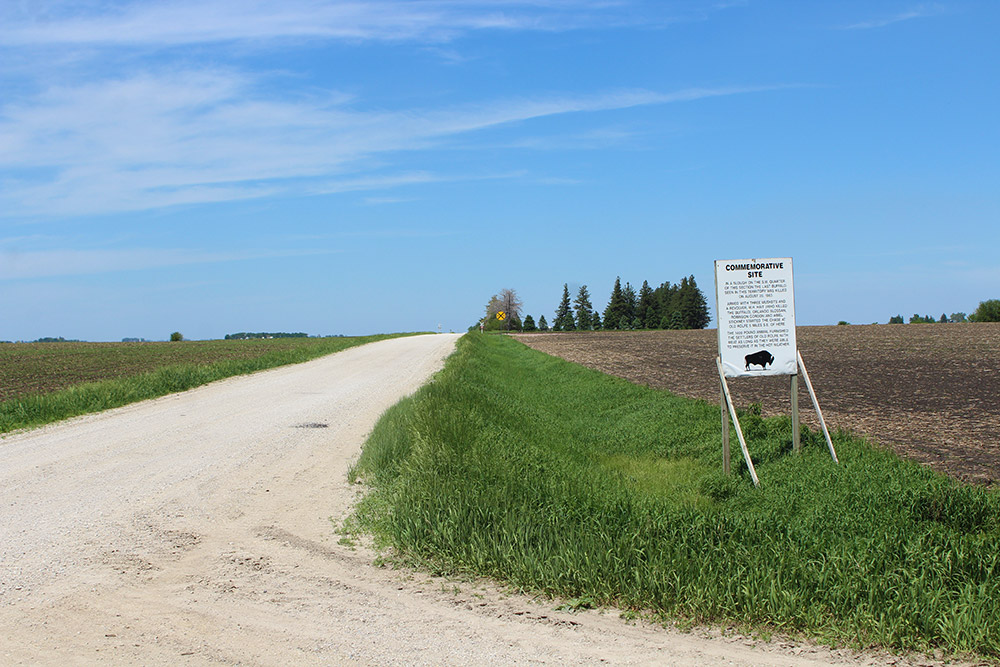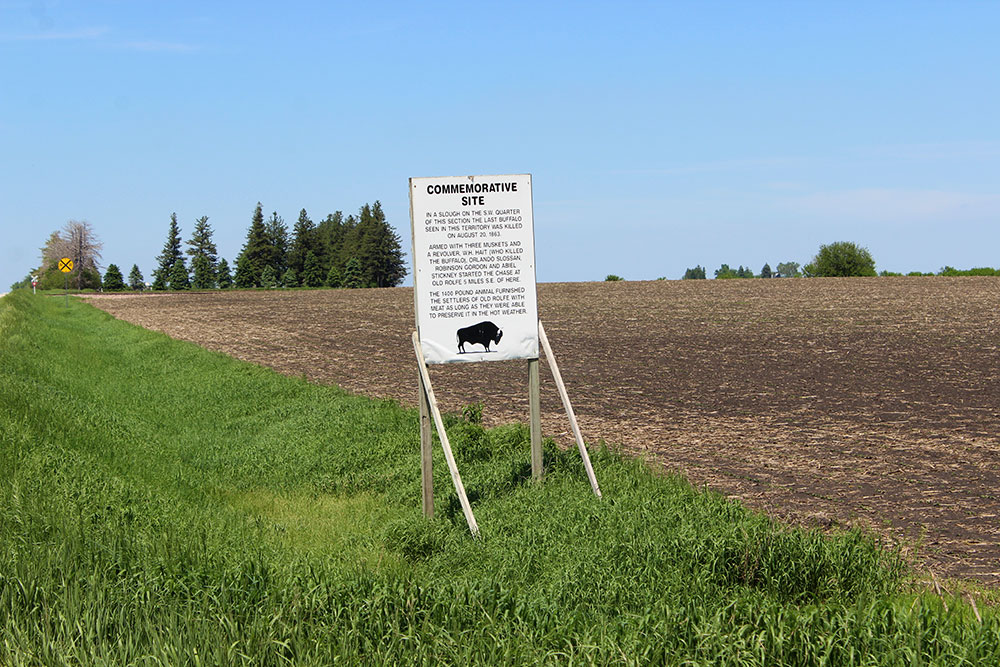
Rise, Fall and Return of the Iowa Bison
Contrary to the song “Home on the Range,” there are no buffalo in North America. Buffalo are found in South Asia and Africa while Bison are found in North and South America and Europe. Even though bison and buffalo look very similar, there are important physical features that distinguish them. The bison has an unusually massive head and a substantial shoulder hump, both of which are covered with thick, woolly fur. The heavy muscles in the hump allow bison to use their heads as snowplows in the winter or as battering rams to drive off predators or compete for females. By comparison, the buffalo of Africa and Asia have no hump whatsoever, and their skulls are smaller than that of bison. However, the buffalo have more impressive horns that they use for protection.
Bison are the heaviest land animals in North America. Typically, they stand 5 to 6.5 feet tall and can weigh over a ton. Despite their large size, bison are very fast and can run up to 40 miles per hour. Also, these large beasts can perform standing jumps up to 6 feet in the air.
The history of the bison is integral to the history of America itself. Thanks to the open grasslands in America, the bison prospered in the country for centuries. It is estimated that there were more than 30 million bison in North America when European explorers first arrived on the continent. They were everywhere from northern Canada to northern Mexico, from western New York to eastern Washington. There were so many bison that they become a symbol of the endless resources of the continent. However, they were not endless.
By the late 1800s, the bison were almost extinct. This was due to a number of events that culminated in the latter half of the 19th century. First, Native American tribes acquired horses and guns. This meant they were able to kill bison in larger numbers than before. Soldiers knew what a staple bison were to the Native American people, so they killed bison in large numbers out of spite and to deprive the Natives of their most important asset. At the same time, a drought dried out the grasslands the herds called home; also, those grasslands were already overburdened by new populations of horses and cattle – there just wasn’t enough food for all the animals. Farmers and ranchers were also killing bison to make room for their animals. However, the main reason for the fall of the bison was the railroad. As tracks were being laid through the bison’s territory, herds were divided and hunters were paid to kill bison in droves to stop them from interfering with the laying of the tracks and to stop them from damaging the trains themselves.

Iowa lost its bison during this time as well. In the mid-19th century, three men from Olde Rolfe went east of the town into the prairie region. They spotted a buffalo and were able to shoot him and down him. To get the bison back to Olde Rolfe, two of the men left the third with the bison and went to town to get a wagon. When they didn’t come back, the third man left to find them and met them halfway between the prairie and the town. When they go to retrieve the bison, they couldn’t find it. They were lost in the tall-grass prairie. Eventually they started circling outwards from the spot they thought they last saw him. After a few hours, they did find the dead bison. This was one of the last remaining wild bison in the whole state. There’s a large sign near where Olde Rolfe was to commemorate this story. Bison completely disappeared from the state by 1870, and by the beginning of the 20th century, there were less than 1000 bison left on the continent.
A 1905 census indicated that there were 835 wild bison still roaming the continent, and they were well on their way to extinction. Thankfully, a series of wildlife enthusiasts created sanctuaries, zoos, and parks to help protect the bison that were left. That same 1905 census indicated there were 256 bison in captivity, and those safe havens helped to once again increase the numbers of bison in the nation over the next few decades. The first national preserve for bison was founded in 1907 in Oklahoma and became known as the Wichita Mountains National Wildlife reserves. Today, the number of bison have increased to 350,000; though only about 1% of their original numbers, it is enough that the bison are no longer in danger of being extinct. However, most scientists still consider the bison to be ecologically extinct through most of their historic range. Of those 350,000 bison around today, fewer than 30,000 are pure, wild bison and only 5,000 are unfenced and disease-free. In May 2016, President Barack Obama singed the National Bison Legacy Act into law which made the bison the national mammal of the United States.
Iowa played a role in the return of the bison. Though there are no wild bison living in Iowa, several small captive herds exist today throughout the state. One of the places you can find them is at Neal Smith National Wildlife refuge about 20 miles outside of Des Moines. Established in 1990, the mission of the Refuge is to actively protect, restore, reconstruct, and manage the diverse native ecosystems of Iowa. Bison herds at the Refuge, numbering about 70-90 bison, are being managed for genetic diversity and they live in a small 700-acre enclosure.
To commemorate the history and importance of the bison to this country, you can visit Rolfe, IA and see the spot where the last bison in Iowa was killed. It’s a somber but important reminder of the national symbol we almost lost.
(Credit to: National Geographic, PBS, and the Iowa Department of Natural Resources for their information about bison and their continued conservation.)


